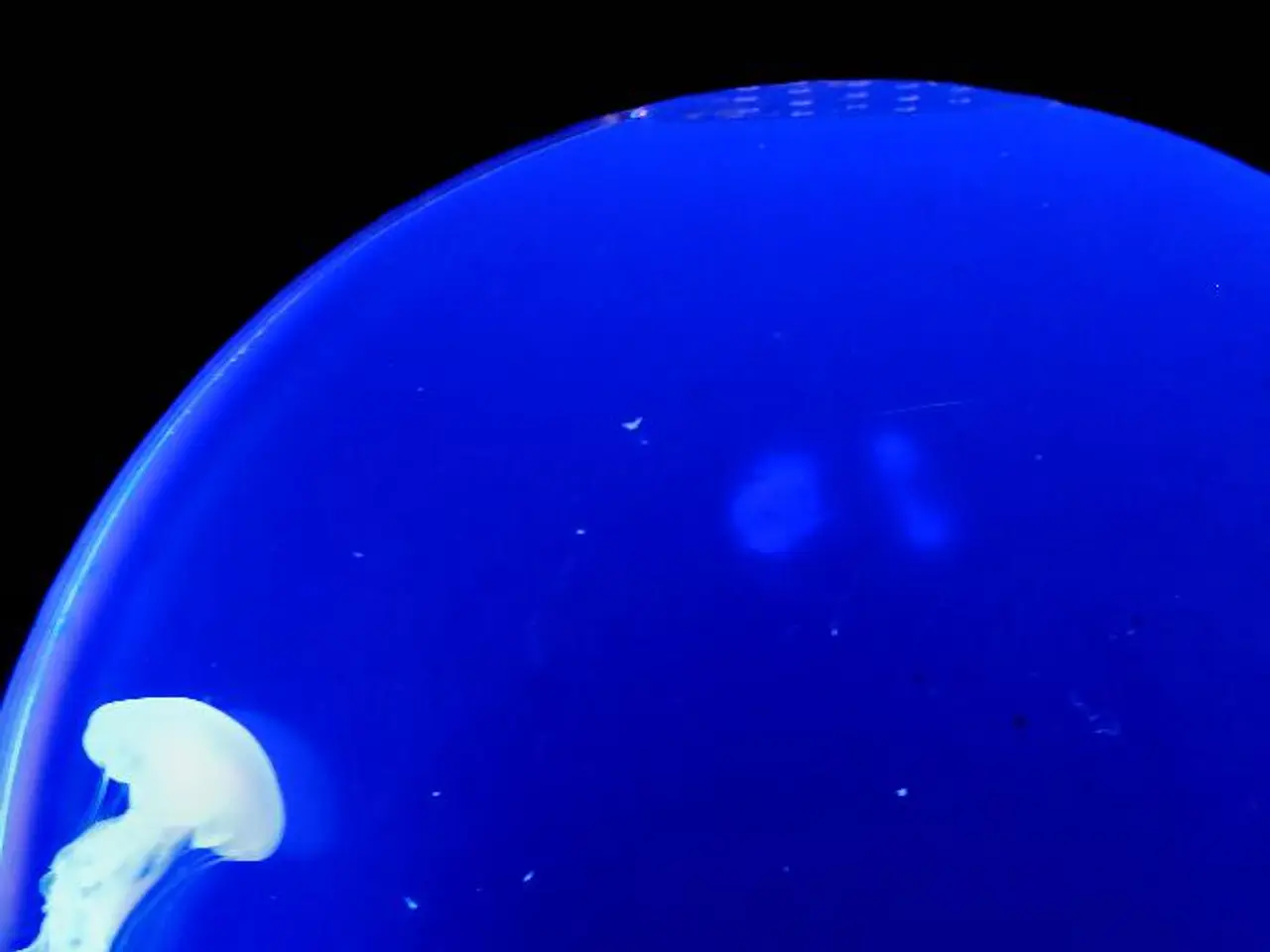Research uncovers the impact of ocean acidification on shrimp's biological aspects
In a groundbreaking study, researchers from Scripps Oceanography and the University of Montana have discovered that ocean acidification can significantly impact the transparency, exoskeleton structure, and chemical composition of red rock shrimp, with potential consequences for marine ecosystems.
Transparency
The translucent carapaces of shrimp like the red rock shrimp allow for direct observation of physiological changes. Changes in water acidity can affect these physical properties, potentially altering their camouflage and vulnerability to predators.
Exoskeleton Structure and Chemistry
Ocean acidification reduces the availability of carbonate ions essential for calcium carbonate formation in shrimp exoskeletons. This can lead to weaker, thinner, or malformed exoskeletons, compromising their protective function and survival. While direct detailed studies specifically on shrimp exoskeletons were not found, similar effects on other calcifying marine invertebrates have been documented.
Impact on Marine Life
Shrimp play crucial roles as scavengers, bioturbators, and prey in marine food webs. Weakened exoskeletons and altered behaviors, such as impaired sensory responses observed in related crustaceans, can reduce shrimp survival, reproduction, and ecological functions. Disruptions to sensory systems, such as olfactory impairment reducing prey detection or mating behavior, have been documented in similar species under acidified conditions.
The Study
The three-week experiment on red rock shrimp, conducted by Jennifer Taylor, Dimitri Deheyn, Michael Allen from Scripps Oceanography, and Jasmine Gilleard from the University of Montana, showed rapid changes in their morphology and visual ecology due to ocean acidification. The study was funded by the Scripps Undergraduate Research Fellowship (SURF) and the Air Force Office of Scientific Research.
Increased shell calcification was observed, leading to more calcium in shrimp shells and reduced shrimp transparency. The study suggests that ocean acidification may adversely impact the rock shrimp's biomechanical properties and its ability to avoid predators through camouflage or escape behavior.
Future Research
Both Jennifer Taylor and Dimitri Deheyn agree that further studies are needed in this area. Dimitri Deheyn stated that the results from this experiment were surprising. The study on marine life was published in the June 1 issue of Scientific Reports.
This research underscores the need for continued monitoring and understanding of the impacts of ocean acidification on marine life, particularly crustaceans like shrimp, which play vital roles in marine ecosystems.
Read also:
- Is it advisable to utilize your personal health insurance in a publicly-funded medical facility?
- Harmful Medical Remedies: A Misguided Approach to Healing
- Can the flu vaccine prevent stomach issues mistaken for the flu? Facts about flu shots revealed.
- Struggling Health Care Systems in Delaware Grapple with the Surge of an Aging Demographic




